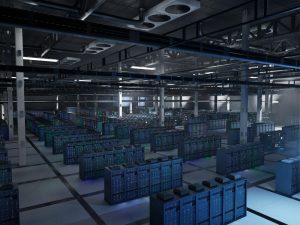In the world of water and steam heating systems, energy efficiency and temperature precision are crucial factors for industrial, commercial, and residential applications. The brand H2O TEK, specialized in climate control and heating solutions, has incorporated advanced technologies into its electric boiler – heaters, among which stands out the 7-level modulation. But what does this exactly mean? And how is it achieved?
What is Level Modulation in an Electric Heater?
Level modulation refers to the equipment’s ability to adjust its output power in stages or steps, instead of only operating in an on/off mode. This allows precise regulation of the amount of electrical energy used to heat the water, optimizing consumption and maintaining a constant temperature without abrupt fluctuations.
In the specific case of H2O TEK, we are talking about 7-level modulation, which means that the boiler can operate at seven different power levels depending on the thermal demand of the system.
How is 7-Level Modulation Achieved?
Seven-level modulation is accomplished through a combination of stepped electrical design, intelligent control, and temperature sensors. Here’s a technical breakdown of how it works:
Segmented Electric Resistance Design
The boiler contains banks of electric resistors distributed in modules or groups. Each group can be independently activated or deactivated.
For example, if a boiler has a total capacity of 70 kW, it can be divided into seven modules of 10 kW each.
As thermal demand increases or decreases, the system turns on or off one or several of these modules to adapt accordingly.
Electronic Controller with Modulation Algorithms
The system is governed by a programmed electronic controller capable of reading system conditions (water temperature, flow, pressure, etc.) and deciding how many modules should be active.
If the desired temperature is close to the setpoint, only a low level is activated.
If there is a large thermal gap, levels quickly ramp up to reach the optimal point.
Temperature and Flow Sensors
Sensors installed at the inlet and outlet of the heater provide data on:
- The actual water temperature.
- The volume of flow circulating.
- Changes in the environment that may require more or less thermal energy.
This data feeds the controller to adjust power in real time.
Intelligent Switching (Relays or Contactors)
The current flow to the resistance modules is managed by power relays or solid-state contactors, allowing fast, safe, and durable level changes.
This switching prevents excessive energy use.
It reduces component wear by avoiding frequent on/off cycling.
Benefits of 7-Level Modulation
- Electricity Savings
Only the necessary power is used.
Prevents overconsumption and reduces energy bills.
- Greater Temperature Precision
Maintains water within a narrow desired temperature range.
- Reduced Mechanical Wear
Fewer extreme on/off cycles extend the system’s lifespan.
- Greater User Comfort
Avoids noticeable thermal fluctuations during use (ideal for hotels, spas, hospitals, industrial kitchens, etc.).
- Compliance with Energy Standards
Modulation helps meet national and international environmental and energy efficiency regulations
The 7-level modulation in an H2O TEK electric boiler – heater is an example of how modern engineering maximizes efficiency and thermal control in applications that demand consistent performance. This technology not only provides economic and energy savings but also guarantees operational reliability and user comfort.
Thanks to its segmented design, intelligent control, and advanced electronics, 7-level modulation is an effective solution to meet heating needs adaptable to different scenarios, under a focus on efficiency and durability.




